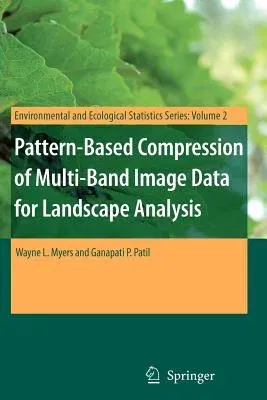Wayne L Myers
(Author)Pattern-Based Compression of Multi-Band Image Data for Landscape AnalysisPaperback, 19 November 2010

Qty
1
Turbo
Ships in 2 - 3 days
In Stock
Free Delivery
Cash on Delivery
15 Days
Free Returns
Secure Checkout
Part of Series
Environmental and Ecological Statistics
Print Length
190 pages
Language
English
Publisher
Springer
Date Published
19 Nov 2010
ISBN-10
1441942718
ISBN-13
9781441942715
Description
Product Details
Authors:
Book Format:
Paperback
Country of Origin:
NL
Date Published:
19 November 2010
Dimensions:
23.39 x
15.6 x
1.12 cm
Genre:
Ecology
ISBN-10:
1441942718
ISBN-13:
9781441942715
Language:
English
Location:
New York, NY
Pages:
190
Publisher:
Weight:
299.37 gm

